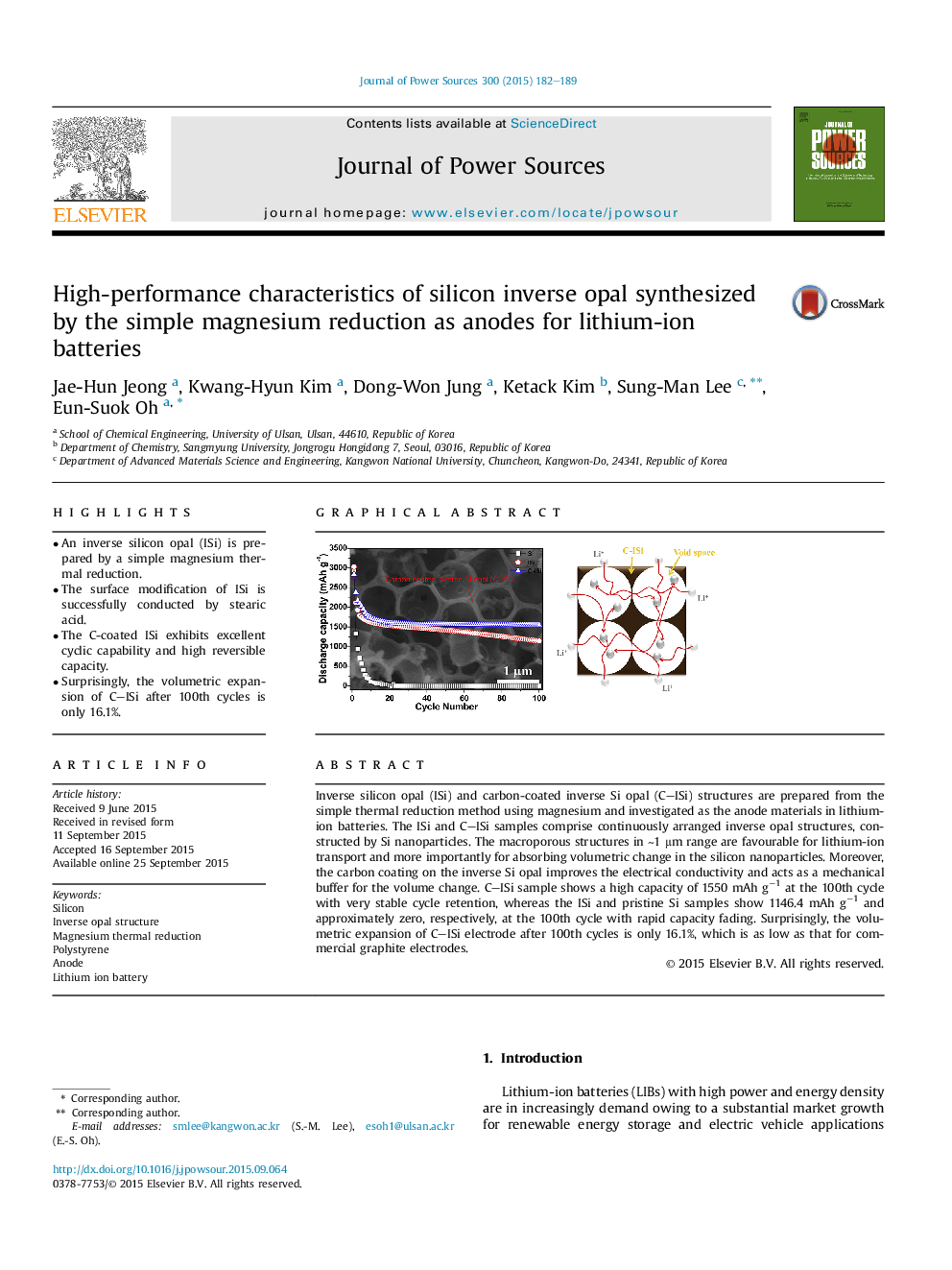| Article ID | Journal | Published Year | Pages | File Type |
|---|---|---|---|---|
| 1285798 | Journal of Power Sources | 2015 | 8 Pages |
•An inverse silicon opal (ISi) is prepared by a simple magnesium thermal reduction.•The surface modification of ISi is successfully conducted by stearic acid.•The C-coated ISi exhibits excellent cyclic capability and high reversible capacity.•Surprisingly, the volumetric expansion of C–ISi after 100th cycles is only 16.1%.
Inverse silicon opal (ISi) and carbon-coated inverse Si opal (C–ISi) structures are prepared from the simple thermal reduction method using magnesium and investigated as the anode materials in lithium-ion batteries. The ISi and C–ISi samples comprise continuously arranged inverse opal structures, constructed by Si nanoparticles. The macroporous structures in ∼1 μm range are favourable for lithium-ion transport and more importantly for absorbing volumetric change in the silicon nanoparticles. Moreover, the carbon coating on the inverse Si opal improves the electrical conductivity and acts as a mechanical buffer for the volume change. C–ISi sample shows a high capacity of 1550 mAh g−1 at the 100th cycle with very stable cycle retention, whereas the ISi and pristine Si samples show 1146.4 mAh g−1 and approximately zero, respectively, at the 100th cycle with rapid capacity fading. Surprisingly, the volumetric expansion of C–ISi electrode after 100th cycles is only 16.1%, which is as low as that for commercial graphite electrodes.
Graphical abstractFigure optionsDownload full-size imageDownload as PowerPoint slide
